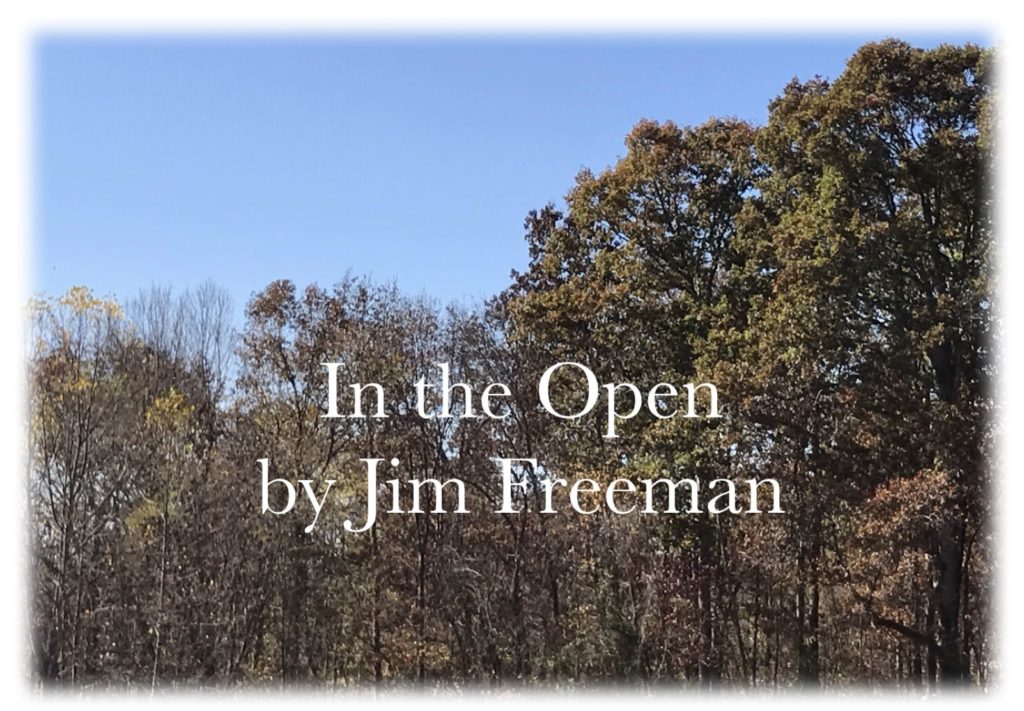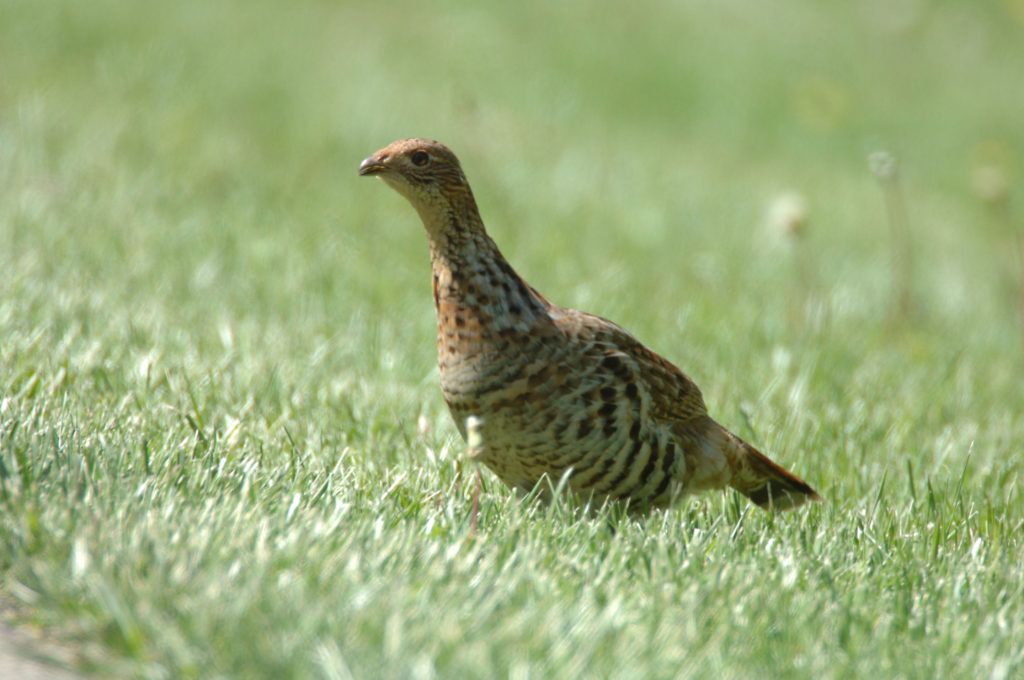Ruffed Grouse populations continue to struggle


Have you heard or seen many ruffed grouse lately? If you have not, you are not alone.
For those younger folks here in southeastern Ohio who have never experienced the heart-stopping thrill of flushing a ruffed grouse in the wild, the Ruffed Grouse is a member of the order Galliformes, or chicken-like birds, which includes such birds as the Bobwhite Quail, Wild Turkey, or Sage Hen. Size-wise it falls in between the grouse and turkey.
It is non-migratory, and when predators are near, it will remain motionless, practically invisible, until the predator is top of it before taking explosively to the air. There are few experiences in the wild that compare. The ruffed grouse is also known for the “drumming” sound that the male makes when seeking a mate in the spring. He will sit (usually) on a log, known as a drumming log, and make a chuff-chuff-chuff sound with his wings that starts slowly and builds in speed before stopping – to me it sounds like someone trying to start an old John Deere tractor.
As a species, the ruffed grouse inhabits a vast area stretching from western Alaska, east to Newfoundland, incorporating most of Canada except for the Arctic tundra. In the United States its range includes New England, the Mid-Atlantic, the upper Midwest, northern Rocky Mountains, Cascades, and finally the Appalachians, which comprise the far southernmost part of its range. It is more of a northern bird, more at home in the boreal forests of Canada and Alaska than the hardwood, deciduous forests of the eastern US and Appalachians.

Unfortunately, ruffed grouse have been disappearing from our southern Ohio landscape for the past 35 years (sort of following the path taken by Ohio’s once-plentiful Bobwhite Quail – which is more of a southern species). A graphic version of the Ohio Ruffed Grouse Drumming Index looks like a steep hill peaking in 1980 and 1982, with more than 40 drummers heard per 100 stops, then dramatically plummeting to the present day with only two or three heard per 100 stops.
What happened? Why the big decline?
The standard answer when someone asks what happened to our grouse is the same answer they get if they ask about the quail: the habitat changed. Here in southeastern Ohio the habitat has slowly changed over the years from quail habitat to grouse habitat, and then from grouse habitat to turkey. Habitat is almost always the key factor in wildlife survival: in short, no habitat – no birds.
I have heard some people blame wild turkeys for the decline in ruffed grouse; there is no doubt that wild turkeys have thrived while ruffed grouse have declined, but it isn’t the turkeys’ fault – they have simply been the winners in the habitat game.
But perhaps habitat isn’t the entire story. Realistically it is hard to discount grouse predators such as house cats, coyotes, and now bobcats. However, know that the grouse have existed and thrived on this continent for countless millennia with both coyotes and bobcats, along with numerous avian predators – so predators alone aren’t enough to eliminate grouse from our landscape.
So, besides the change in habitat, and possibly the presence of predators, what other factors may be affecting grouse populations?
Consider disease. In places like Pennsylvania, where the Ruffed Grouse is the state bird and there is grouse habitat, hunters there have been seeing far fewer grouse. One suspect: West Nile Disease. One study by the Pennsylvania Game Commission (with assistance from Pennsylvania’s grouse hunters) showed ruffed grouse were able to contract WND and that up to 40 percent of birds died from the disease outright while only 10 percent would be able to live in the outdoors. For a species on the edge, a disease could represent the tipping point.
There aren’t many grouse hunters out there these days; although a season exists most grouse hunters go somewhere else to pursue wild birds. Grouse season, like quail season, I feel is more of a “place holder” saving that spot on the calendar in case the populations ever return (versus establishing or reestablishing a season along with all the political drama that entails). Throughout their range the ruffed grouse is doing well, but even where they are plentiful, grouse populations go in cycles, and hunting seems to have little effect on the cycle according to researchers.
Restoring ruffed grouse to southern Ohio is a daunting challenge, even with the assistance of sportsmen like the Ruffed Grouse Society. For one thing, southeastern Ohio was always at the southern edge of grouse habitat, so even though they may have been relatively plentiful when the habitat was present, it was never in the heart of grouse territory.
Also remember that grouse are non-migratory, so even if you build they habitat, they won’t come – at least not anytime soon. You can’t just change the game regulations and expect extra birds to come flying into their new homes the following spring. Also, they are notoriously hard to pen-raise, and expensive at that, so traditional relocation of birds is not feasible.
Maybe the days of experiencing grouse are over in southeastern Ohio. I hope I am wrong, but it really isn’t looking too hot for the ruffed grouse. However, just a few generations ago people here said the same thing about the whitetail deer, wild turkey, and bobcats – but it may take a lot of hard work and dedicated sportsmen to make it happen.
Jim Freeman is the wildlife specialist for the Meigs Soil and Water Conservation District. He can be contacted weekdays at 740-992-4282 or at [email protected]






